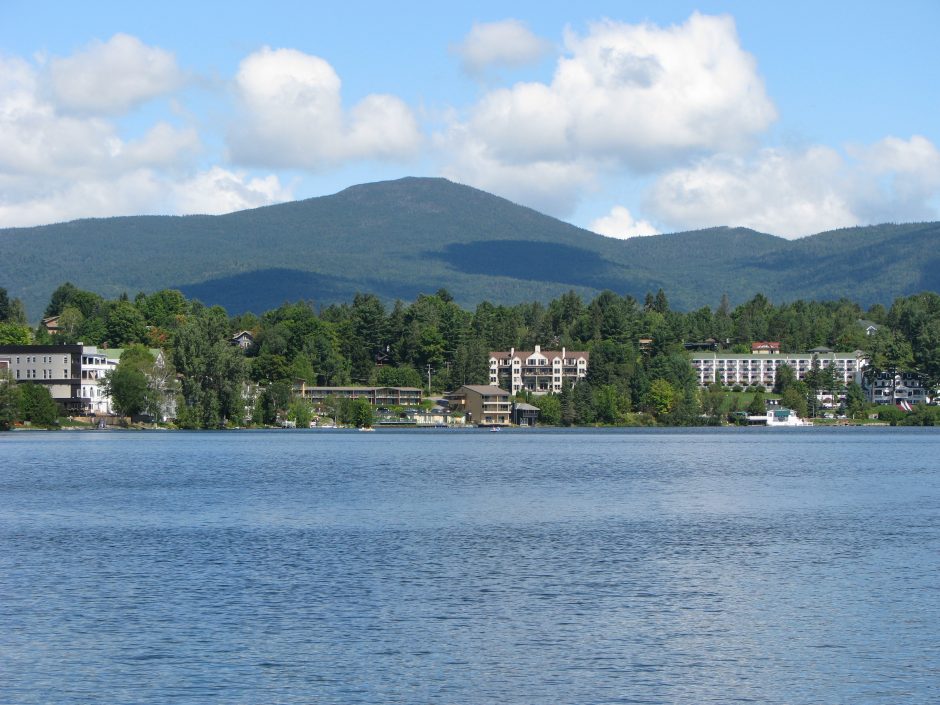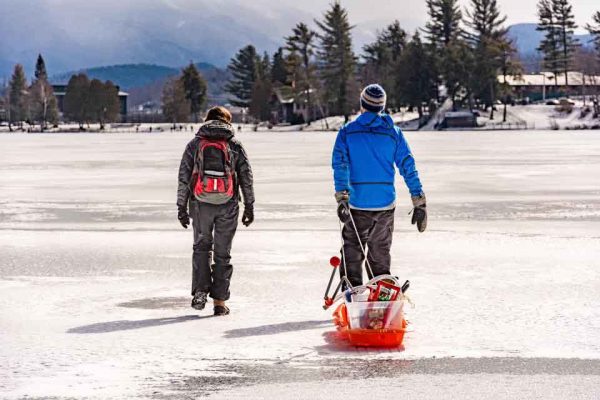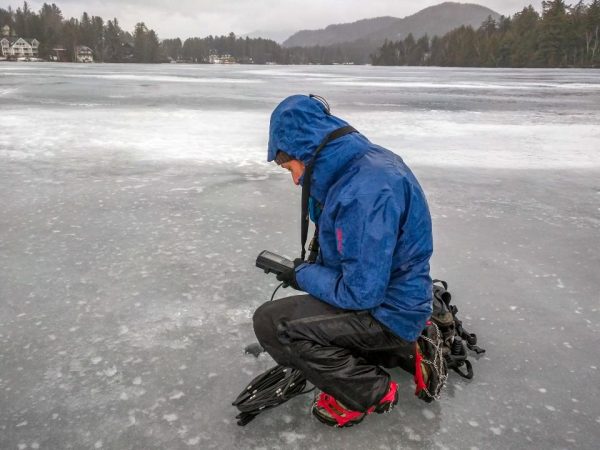Mirror Lake Salt Levels Still a Problem

Mirror Lake, Lake Placid. (Credit: By Mwanner [CC BY-SA 3.0 (https://creativecommons.org/licenses/by-sa/3.0) or GFDL (http://www.gnu.org/copyleft/fdl.html)], from Wikimedia Commons)
For 20 years now, interested parties have been monitoring water quality in Mirror Lake, a relatively small lake nestled in upstate New York’s Adirondack Park. This area is a getaway for many urbanites, but the smaller population doesn’t mean the lake’s water quality isn’t under threat. In fact, concentrated patches of development have led to increasing salt and chloride levels that locals are now working to lower.
The AuSable River Association 2018 water quality report
The annual AuSable River Association report on Mirror Lake water quality reveals that increasing chloride and salt levels may have major effects on the lake’s overall health—and this isn’t a new concern.
“We started monitoring the lake in May 2015 and issued the first report in March 2017,” Dr. Brendan Wiltse, Science and Stewardship Director of the Ausable River Association (ARA) told EM. “This is our second annual report on the lake. The lake has been enrolled in a citizen monitoring program (CSLAP; Citizen Statewide Lake Assessment Program) since 1998, but that program does not assess sodium and chloride concentrations.”
ARA monitors Mirror Lake using standard limnological protocols.
“We measure temperature, dissolved oxygen, specific conductance, and pH at 1m intervals through the water column on a bi-weekly basis year-round,” explains Dr. Wiltse. “We also collect a 2-meter integrated surface water sample and a discrete sample using a Kemmerer sampler 1m off the bottom during each visit. pH, conductivity, alkalinity, total phosphorus, nitrate, ammonium, total nitrogen, chlorophyll-a, chloride, sodium and calcium are analyzed at the Paul Smith’s College Adirondack Watershed Institute.”
This careful work shows that long-term trends in chloride, conductivity, and sodium remain a challenge for everyone concerned with the health of the watershed.
“The underlying geology has very little chloride and the only other natural source is atmospheric deposition,” details Dr. Wiltse. “As a result, the median concentration for unimpacted Adirondack lakes and streams is 0.24 mg/L of chloride. The surface water concentration in Mirror Lake is around 40 mg/L or 167-times higher than we would expect for an Adirondack lake. Road salt is definitely the source of the additional salt, especially in this heavily developed, small watershed.”
In fact, the team documented elevated chloride concentrations from the bottom of the lake, and there is evidence that these higher concentrations are interfering with the lake’s natural seasonal turnover process.
“During the winter, the stormwater runoff that directly enters the lake has extremely high concentrations of salt,” Dr. Wiltse states. “The highest we have measured to date is 2,400 mg/L of chloride, which is 10,000 times higher than the median concentration for unimpacted Adirondack streams.”

Liz Yerger and Cory Laxson from the Adirondack Watershed Institute pulling a sled full of field equipment across Mirror Lake. (Credit: AuSable River Association, https://www.ausableriver.org/watershed/lakes/mirror-lake)
The added salt renders stormwater denser. Due to the small size of the lake, the water flows along the lake bottom, accumulating at depth.
“Throughout the winter, we are able to see the sodium and chloride gradually accumulate from the bottom of the lake upwards,” describes Dr. Wiltse. “The density differences in the water column due to salt add the energy required to mix the lake; our preliminary modeling shows a 75 to 200-times increase. The lake receives relatively little wind exposure due to its orientation and surrounding topography. This, combined with the salt-induced density differences, prevented the lake from mixing in 2017 and we expect it won’t mix in 2018 as well.”
Moreover, the team now has comparative data to bolster their theory.
“In 2016, the winter was more mild, less salt was applied, and ice-out occurred about 1 month earlier,” remarks Dr. Wiltse. “That spring the lake did turnover due to reduced salt-induced density differences and a prolonged spring mixing period.”
A lack of turnover results in lower dissolved oxygen concentrations in the hypolimnion of the lake. “This is a threat to the lake trout and rainbow trout found in the lake, and increases internal nutrient loading,” adds Dr. Wiltse.
A focused approach to a local problem
The areas surrounding Mirror Lake have reduced their use of road salt. Although these measures have made a positive difference, the problem is not entirely solved.
“Local government is trying to reduce the amount of salt they use, but we haven’t seen a substantial shift in the chemistry of the lake as a result,” remarks Dr. Wiltse.
In the report, the team explains that part of the issue is indeed how much salt is used, and another issue is even spreading of salt concentrations. This is because it requires more energy to turn over the lake when the salt is unevenly distributed. Determining a set of best practices based on this issue is one area of future research for the team.

Monitoring in the field. (Credit: AuSable River Association, https://www.ausableriver.org/watershed/lakes/mirror-lake)
“We are focused on measuring the amount of salt applied to the watershed from all sources (state, municipal, and private),” explains Dr. Wiltse. “With this data, we can model how salt moves to the lake and what amount of reduction is needed to restore turnover. Once we know what our target is we will assist stakeholder in implementing best management practices that will achieve those reductions.”
The team will also focus on building a water balance and chloride mass balance for the lake moving forward. This way, they will be better able to accurately model and predict the effectiveness of proposed management actions.
“[The Mirror Lake] area is seen as a large protected area that may not be susceptible to these sorts of problems, but there are pockets of concentrated development that deal with many of the same problems as much larger urban areas,” states Dr. Wiltse. “Therefore, it is important that we don’t overlook the impacts in these areas out of the false belief that they are fully protected.”
Top image: Mirror Lake, Lake Placid. (Credit: By Mwanner [CC BY-SA 3.0 (https://creativecommons.org/licenses/by-sa/3.0) or GFDL (http://www.gnu.org/copyleft/fdl.html)], from Wikimedia Commons)




Pingback: Mirror Lake Salt Levels Still a Problem - Lake Scientist